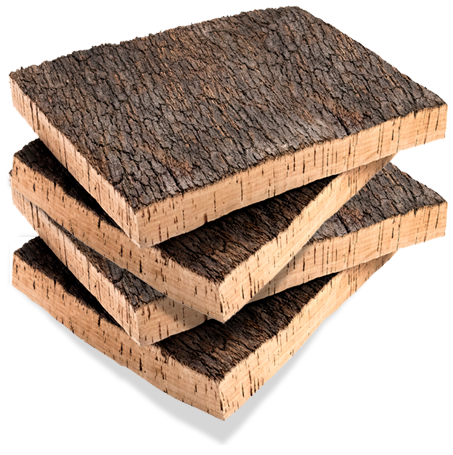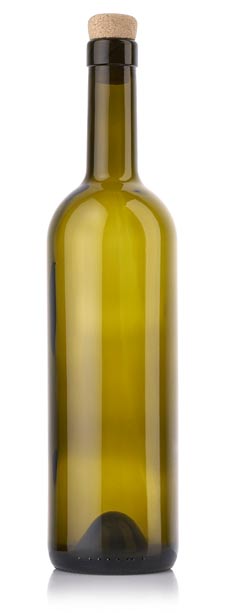Nature
Both cork and glass are derived from nature, and have a range of special characteristics that make them ideal for wine preservation. Moreover, they are two of the most sustainable packaging materials on the planet.

Cork
Made from the bark of the cork oak tree, cork is light and compressible, with each cork made up of around 800 million cells. Its unique structure enables cork to adapt naturally to the shape of the bottle neck, while protecting the contents, which is a crucial element in developing the special character of the wine.
Cork has a highly positive impact on the environment. Biodegradable and recyclable, it is 100 percent renewable and hand-harvested from trees that are never felled. Each cork stopper absorbs up to 112g of CO2, unlike artificial closures, which emit CO2 into the atmosphere (LCA by PriceWaterhouseCoopers).
Cork production actually preserves biodiversity – in fact the cork oak forest is one of 35 global biodiversity hotspots – and combats both social and environmental desertification by providing the world’s highest paid agricultural work and regulating crucial water cycles.
Glass
Glass is natural. It’s made from three simple ingredients: sand, limestone and soda ash. Those ingredients make glass endlessly recyclable. And glass retains the same high quality, regardless of how many times it is recycled.
Glass is stable. It doesn’t break down into harmful chemicals in the earth or oceans..
And glass actually has a lower carbon footprint than other packaging materials. The total lifecycle of packaging, whether it’s glass, plastic, aluminum or paper, includes raw material extraction and transport, manufacturing, shipping, and recycling or disposal. Because recycled glass can be used to make new bottles, production requires fewer raw materials and less energy. Glass is a packaging choice you can feel good about.
